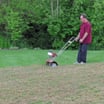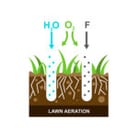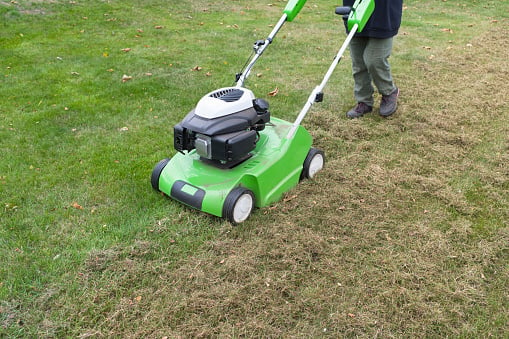On the surface, lawn thatch sounds like something you don’t want any part of when it comes to taking care of your yard. If you have it, it’s not the end of the world, but you will want to take some steps to get rid of it. By doing so, you’ll help your lawn thrive.
Dethatching your lawn is an important part of your lawn care regimen because it improves its overall health. When you dethatch, you actually cut through the thatch with knife-like blades and then remove the debris. It is a combine-like operation in which you comb out the bad stuff (thatch) that’s keeping your lawn from looking its best.
So, let’s take a look at some of the ways you can remove and/or control lawn thatch in your yard, and what we consider works best.
Mechanical Dethatching
One way to remove thatch is by raking, typically with gasoline-powered equipment. While effective, this technique can damage your lawn by tearing up healthy grass along with the thatch.
Dethatching Rakes
Manual dethatching rakes are heavy, short-tined rakes with curved blades designed to dig into your lawn and pull up thatch as you rake. It’s surprising just how much thatch can come out of a small patch of grass. The seeds better embed into the soil rather than simply remain on top.
Dethatcher (Equipment)
Dethatching equipment goes by many names including but not limited to power rake, dethatcher, and lawn comber.
 A dethatching machine uses metal blades or tines to comb across the grass and pull thatch up to the surface of the lawn. After the thatch is pulled to the surface, it can be bagged up or turned into compost.
A dethatching machine uses metal blades or tines to comb across the grass and pull thatch up to the surface of the lawn. After the thatch is pulled to the surface, it can be bagged up or turned into compost.
Core Aeration
Lawn aeration is another way to get rid of excessive thatch. But there is a difference between aerating your lawn and dethatching it.

Our lawn experts feel core aeration works the best because core aeration helps loosen compacted soil, which allows the grassroots to grow and spread. Loosening the soil also helps get the water and nutrients your lawn needs deeper into the ground.
Keep Lawn Thatch From Building
Too many fertilizer applications and not watering your lawn enough can encourage thatch buildup. So, be sure to keep a good record of your treatments and watering schedule.
It also helps to know what type of grass you have. Grass-type influences how often you should be dethatching your lawn. Creeping grasses like Kentucky bluegrass and bentgrass accumulate thatch quickly and generally require at least annual dethatching while clumping grasses such as tall fescue and perennial ryegrass need dethatching no more than once every few years.
Let Lush Lawn Help
Fall is a great time to dethatch (if you haven’t already done it in the spring). Lush Lawn will be happy to core aerate your lawn and add our Soil Sweetener program. It’s designed to increase the PH level of your soil, balancing it up into a more fertile range. We also offer a Fall Lawn Care and Restoration program designed to build up your grass so it will come back stronger than ever next spring.
